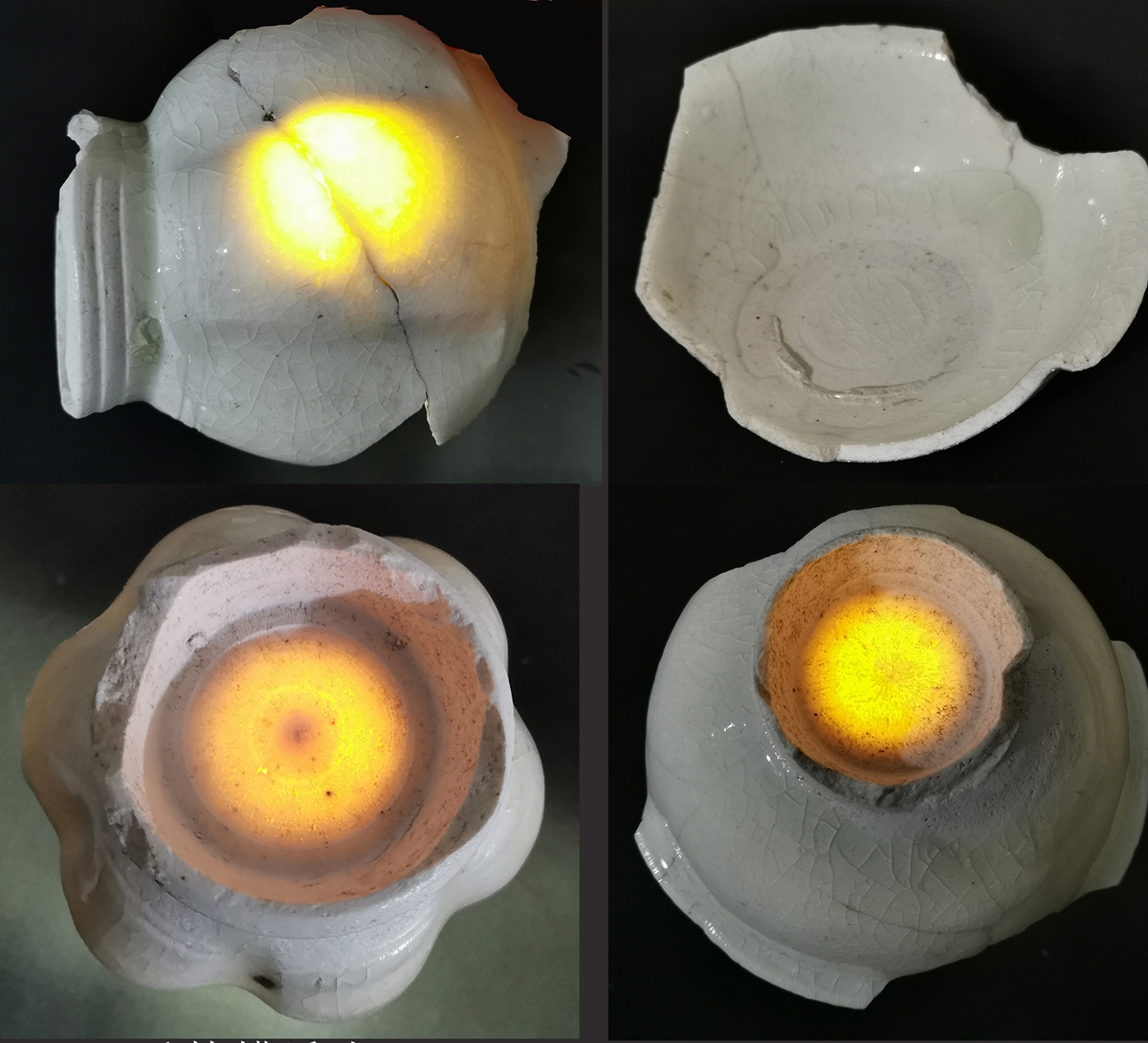
White porcelain bowls unearthed from the Suyukou Porcelain Kiln Site in the Ningxia Hui Autonomous Region Photo: Courtesy of the National Cultural Heritage Administration
New discoveries made at five archaeological sites, including large ruins from the Qin Dynasty (221BC-206BC) and the remains of capital cities established by ethnic minority groups, were announced by China's National Cultural Heritage Administration at a press conference on Wednesday. The discoveries reveal the cultural exchanges among different regions of China since ancient times and provide further evidence of Chinese civilization's continuity, inclusiveness and diversification.
At the press conference, the administration revealed the latest results of excavation efforts at five excavation sites such as the discovery of the earliest houses in China at the Neolithic Sitai Ruins in what is now Shangyi county, North China's Hebei Province, and the earliest known porcelain kiln site from Xixia (1038-1227).
The five sites reflect diverse aspects of Chinese civilization such as prehistoric culture and social development, national etiquette and capital architecture, and can be seen as milestones for tracing the origin of Chinese civilization, experts noted.
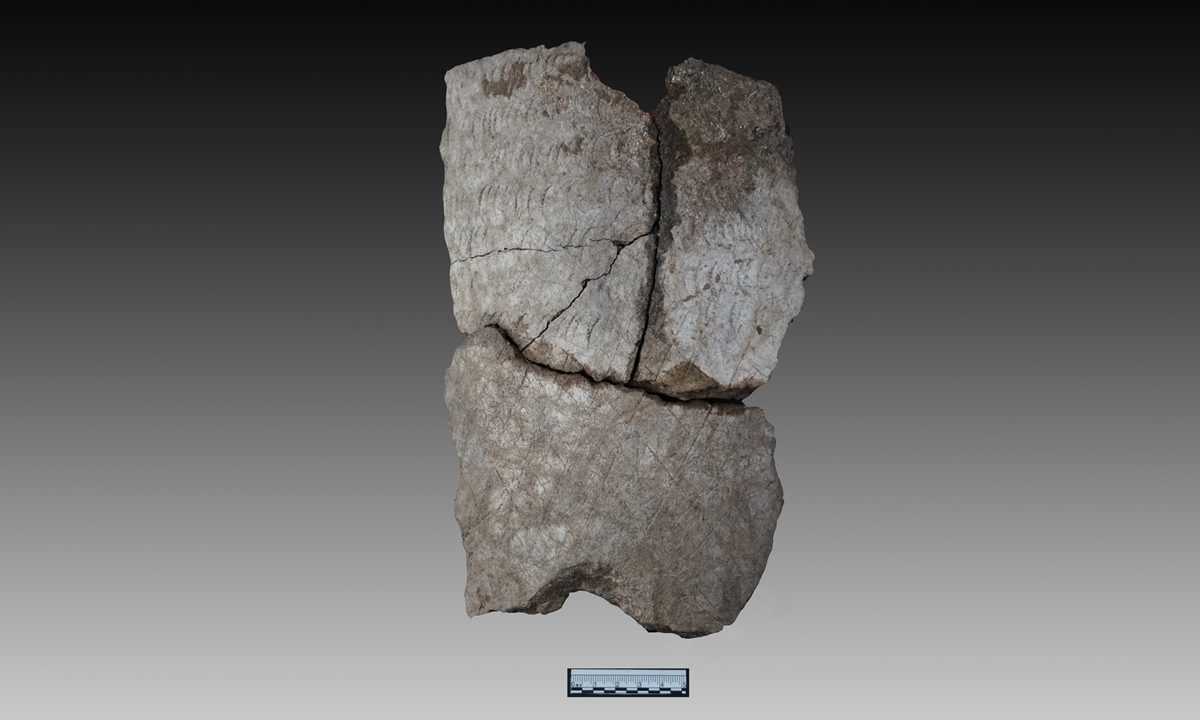
Fragments of pottery unearthed from the Sitai Ruins in Hebei Province Photo: Courtesy of the National Cultural Heritage Administration
Rarely seenAt the Sitai Ruins in Hebei Province, which date from 10,400 years ago and cover an area of about 150,000 square meters, Chinese archaeologists have discovered over 40 dwellings and 800 artifacts made of pottery, stone, bone and shells.
Zhao Zhanhu, a research fellow at the Hebei Provincial Institute of Cultural Relics and Archaeology, told the Global Times on Thursday that the dwellings are the earliest evidence of the emergence of Neolithic settlements in northern China and show human beings' transition from a nomadic lifestyle in the Paleolithic Age to a settled life in the early Neolithic Age.
A jar with large mouth and sharp bottom was excavated at the ruins. Only one other similar jar has been found in China so far, according to Zhao, who noted that the relic is similar in shape and decoration to pottery wares found in the Baikal region of Russia. Archaeologists noted that the distinctive features of unearthed cultural relics and remains at the ruins represent a new archaeological culture.
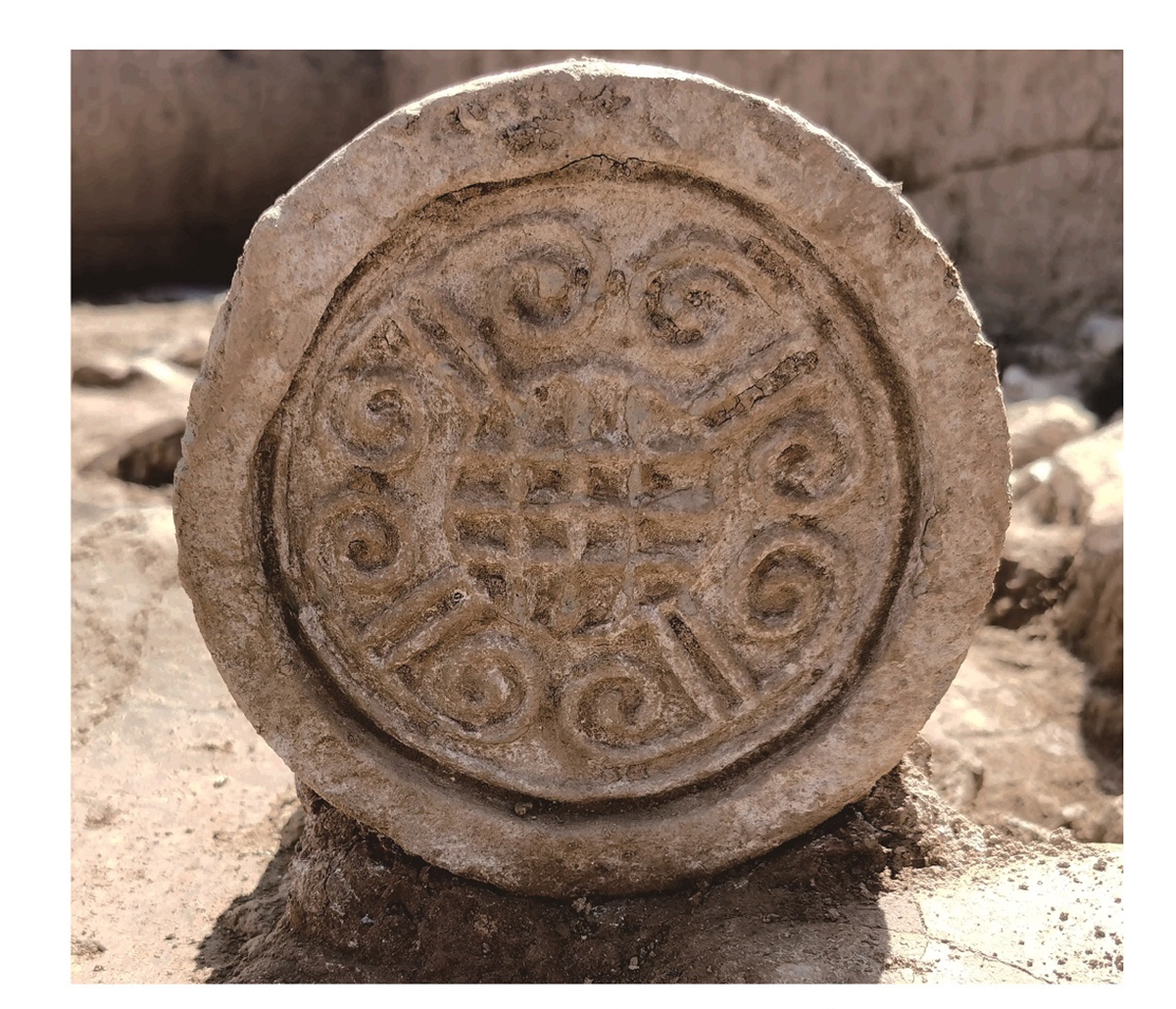
An eave tile unearthed from the Sijiaoping Ruins in Gansu Province Photo: Courtesy of the National Cultural Heritage Administration
At another site, the Sijiaoping Ruins, in Lixian county, Northwest China's Gansu Province, archaeologists found the remains of a large building dating to the Qin Dynasty, which they speculate was one of the sacrificial sites used by Qin Shi Huang, the first emperor of China.
The Sijiaoping Ruins are composed of a flat hilltop foundation about 28,000 square meters in size. The remains of groups of buildings have been found on the foundation. From above, the ruins look like a beautifully woven Chinese knot.
Hou Hongwei, a researcher with the Gansu Provincial Institute of Cultural Relics and Archaeology, said that such a large complex from that period is quite rare in China. Experts speculate that it was a place to hold ceremonies during the Qin Dynasty, China's first empire, and was a symbol of unification.
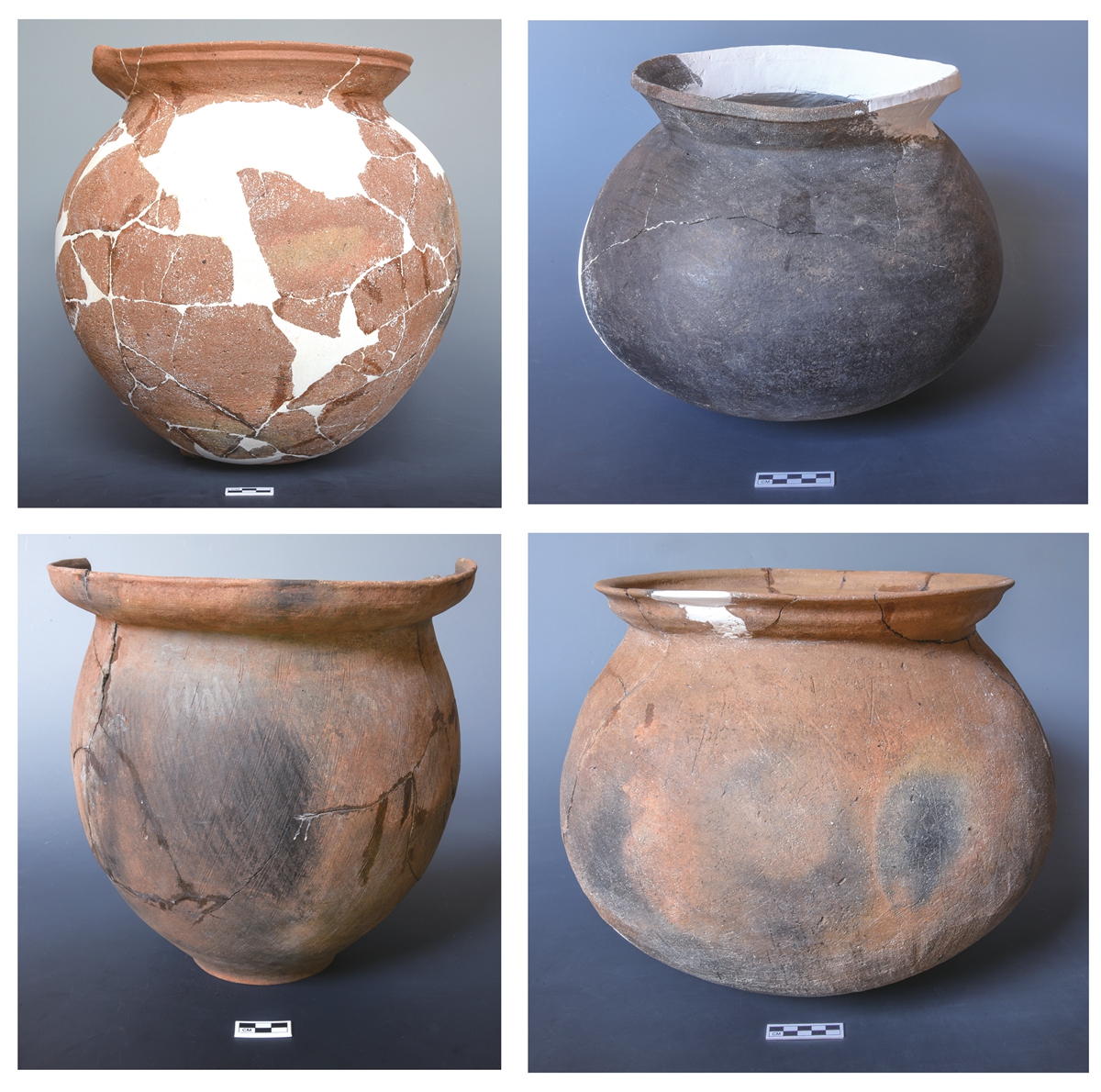
Shang Dynasty (c.1600BC-1046BC) pots unearthed from the Gucheng Village Site in Yunnan Province Photo: Courtesy of the National Cultural Heritage Administration
Ancient connections
Excavations have also made discoveries that provide more insight into connections between China's many ethnic groups.
The Suyukou Porcelain Kiln Site found in the Helan Mountain in Northwest China's Ningxia Hui Autonomous Region was once a production center of fine white porcelain for Xixia, an empire established by the Tangut people who lived around Northwest China's Hexi Corridor, a stretch of the ancient Silk Road.
Thirteen kilns have been discovered at the site, which covers an area of about 40,000 square meters. The remains of saggers - a ceramic container used to protect wares being fired in a kiln - with "official" inscriptions were found at the site, a sign that the kilns produced porcelain for the dynasty's royal court.
The site is the earliest Xixia porcelain kiln site discovered so far and helps fill the historical gap in fine white porcelain firing in Northwest China, Chai Pingping, an expert from the Ningxia Institute of Cultural Relics and Archaeology, told the Global Times.
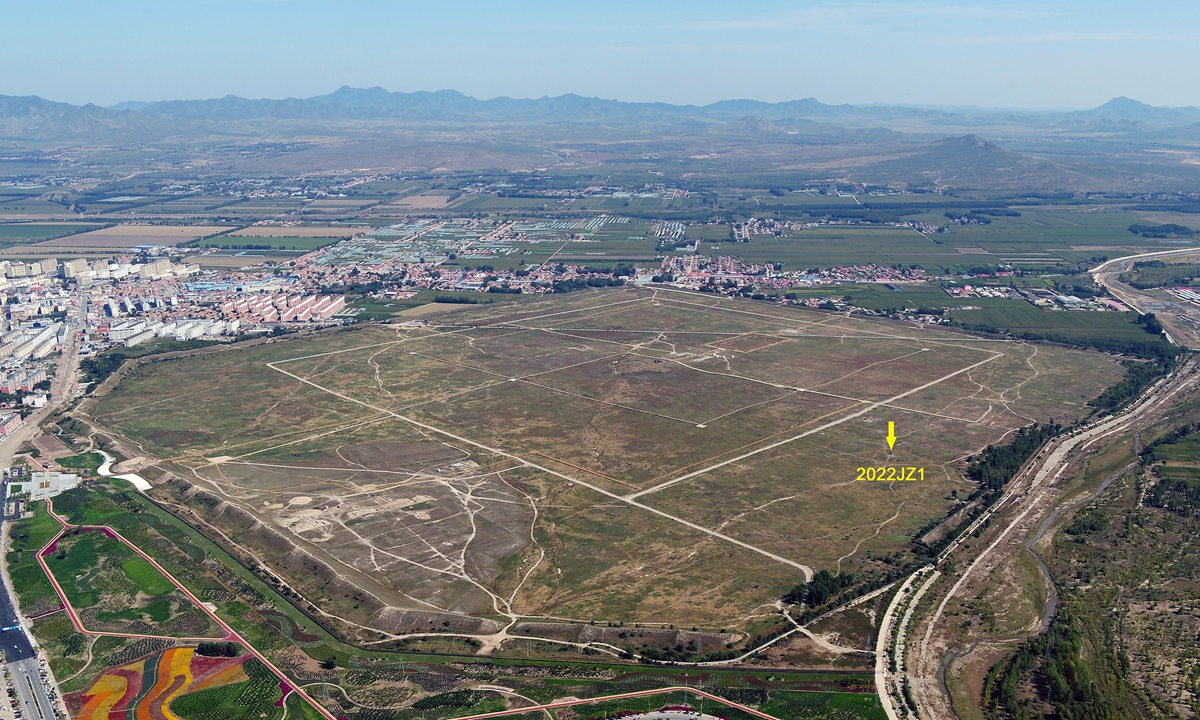
The Liao Dynasty Shangjing Ruins in the Inner Mongolia Autonomous Region Photo: Courtesy of the National Cultural Heritage Administration
Shortly after the collapse of the Tang Dynasty (618-907), the Chitan people established the Liao Dynasty (916-1125), an empire covering large parts of North China. In the Bairin Left Banner of North China's Inner Mongolia Autonomous Region, Chinese archaeologists have found the remains of the first capital of the empire.
Within the capital, a large imperial building was discovered. Based on the different styles and methods used in its construction, experts have surmised it went through three separate periods of construction. This means that the building has great value for research into the evolution of Liao Dynasty architecture.
Meanwhile, in Kunming, Southwest China's Yunnan Province, discoveries are giving more insight into the ancient Dian Kingdom, which was located around what is today known as Dianchi Lake.
The Gucheng Village Site in Kunming can be traced back to more than 3,000 years ago. Covering an area of about 42,000 square meters, the site is the first complete ring-shaped settlement dating to the Shang and Zhou dynasties (c.1600BC-256BC).
Pits full of cast off snail shells have been discovered at the site, evidence of the diet of the ancient people in the region.
Zhou Ranchao, a researcher with the Yunnan Institute of Cultural Relics and Archaeology, told the Global Times that some unearthed seashells found elsewhere at the site came from the Indian Ocean, indicating that ancient Chinese had close cultural and trade communication with ancient cultures in South Asia.








